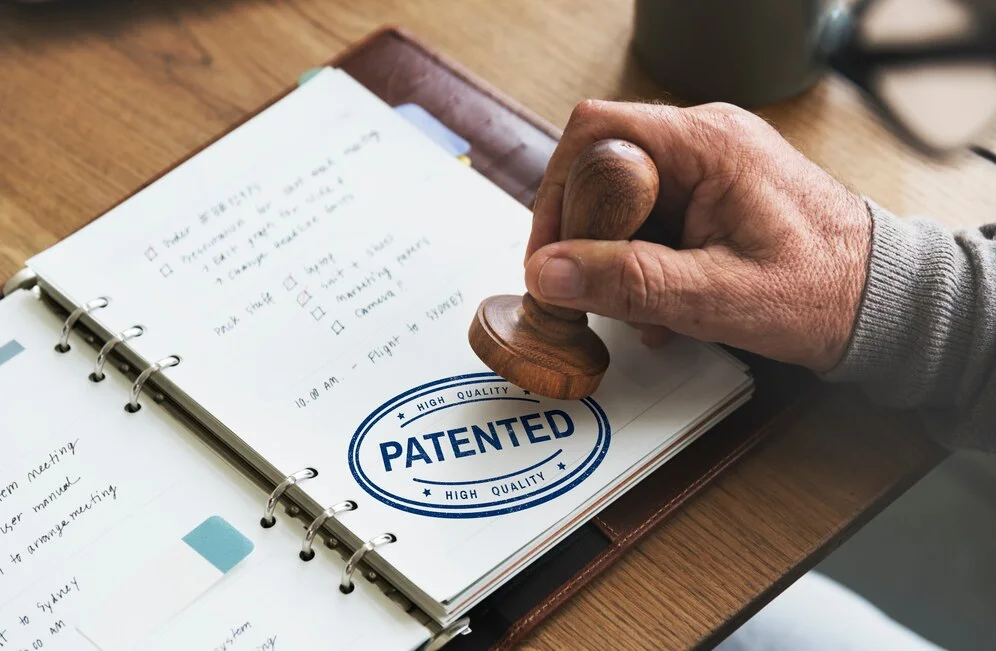Outline of the Article
- What are Prior Art Searches?
- What are the various types of Prior Art Searches?
- What Makes a Prior Art Search Important?
- Are prior art searches necessary?
- How to Use Prior Art in Patent Search
- Drawbacks of conducting a prior art search
What are Prior Art Searches?
In the world of patents, prior art plays a big part. The word “prior” obviously refers to events that occurred before a particular point. Whereas the word “art” covers every relevant component of innovation. Simply, all technical and scientific knowledge that published before the filing of a patent application for an invention is "prior art". This includes a broad range of sources, such as journal papers, technical publications, press announcements, marketing brochures, product information materials, newspaper stories, books, journals, patents and even pending patent application which are published in the journals of the patent offices of different jurisdictions. In simple terms, it is any proof that an invention's essence is already part of the public domain.
It's crucial to note that prior art related to intellectual property need not be tangible or even readily available for buy. What matters is that, at some point, in some form, someone has previously described, presented, or created something. That closely resembles the technological essence of your invention.
To put it simply, prior art includes all knowledge that was publicly available, before the formal filing date of a patent application. Knowing any relevant prior art that is connected to your invention is crucial. As it allows you to highlight how much same or novel your idea is in comparison to what is already known. In turn, this improves the chances of receiving a patent grant.
For patenting an invention, the innovation must exhibit novelty, industrial applicability, and a lack of obviousness. Inventors/applicants must check the uniqueness of their works before submitting patent applications. To find any relevant previous art associated with the inventions, prior art searches are essential. This careful procedure makes sure the idea stands out and satisfies the requirements for patent protection.
What are the various types of Prior Art Searches?
In all type of searches of patents (Intellectual property) prior arts are found. There are various distinct categories of prior art searching, each tailored to specific objectives. These includes:
- State-of-the-Art Search: A careful analysis of both patent and non-patent literature is required for this type of search. Its primary goal is to identify existing solutions and possible rivals in a certain technology field. Before starting Research and Development (R&D) efforts, this kind of search becomes especially helpful. It gives the companies a thorough insight into the current state of a technology. Strategic planning and educated decision-making are encouraged as a result.
- Landscape or Strategic Search: This search paradigm is oriented towards creating a holistic map of the competitive landscape. It covers a wider perspective than what is immediately covered by specific patents. Its objectives include looking into emerging industry opportunities and commercial and technology trends. The objectives also include assessing the strength of a patent portfolio, and finding possible licensees. A thorough company strategy can be developed using this kind of search. Thus, the potential of intellectual property assets is maximized.
- Patentability search: The purpose of patentability search is to find whether an invention is patentable or not. Patentability of an invention has 3 criterions: Novelty, Non-obviousness, and industrial usability. The novelty and non-obviousness assessment is done by finding prior arts. If the found prior arts are different from the subject invention, then the invention is deemed to be as a patentable invention.
There are more searches like validity search, the invalidity search, but to summarise, each of these prior art searching subcategories has a particular function, whether it be to aid in R&D planning, provide tactical insights, or better understand the landscape of intellectual property.
Why Is It Important to conduct a Prior Art Search?
Conducting a prior art search is important for companies investing in R&D, for students applying patents, for companies earning from their patents, for companies thinking of filing infringing suits to the competitors. Both patent and non-patent literature are considered as prior arts. The objectives of your organization at the time of conducting will determine how important a prior art search is. A prior art search is less important to do if the patentability of your invention will not have an impact on your business. Cost, patentability, and validity are some factors that make it important to perform a prior art search.
- Cost Implications: The importance of a prior art search is clear when considering the high costs involved in obtaining and defending patents. The novelty and non-obviousness of inventions are only established when they are compared with relevant prior-arts. By getting oneself different with prior arts before drafting and submitting a patent application gives confidence and encourage organizations to invest in patenting the technology. It also heightens the likelihood of obtaining an enforceable patent. This proactive strategy reduces the possibility of resource-intensive appeals or requests for further examination (oppositions). Hence, the prior art search minimizes the cost implications of future prosecution.
- Determining Patentability: Determining the patentability of the invention is a key justification for performing a prior art search. The patentability is determined if the found prior arts are different from your invention. If some similar prior arts are found during the prior art search, then this can help in formulating a set of unique claims by differentiating the claims from the claims found in the prior arts (if possible). It highlights the distinctiveness for qualifying the invention as both novel and non-obvious. Even though the invention and the prior art are closely related. But still, the application highlights patentable features that go beyond the current field.
- Ensuring Validity: A thorough understanding of the current state of the art prevents the filing of patent applications that could face legal challenges. The examiner will take the most important prior art into consideration. If it is specified as such in the application, then include it in the official record, and try to show an improvement over it in the complete specification of your patent application. In fact, anyone involved in the prosecution of the application has a duty to disclose relevant details, including prior arts. The inclusion of relevant prior arts inside the patent application boosts the strength of the patent. This contributes to its overall validity.
In essence, the practice of engaging in a meticulous prior art search is a strategic decision. This offers protection against undue costs. As it enhances patentability prospects, and buttresses the patent's legitimacy in the face of potential legal scrutiny.
Are prior art searches necessary?
For individual innovators and startups, it is highly advisable to focus on the prior art search in most scenarios. In larger firms, a group of scientists and technicians familiar with the industry and the actions of rivals may reduce the possible effects of neglecting such a search. Given their limited resources and capabilities, small enterprises and startups, however, operate in a very different context. The success of their patent relies heavily on the prior art searches.
There is a common misconception that an inventor's concept is wholly original. That they have an insight that no one else has, particularly among emerging inventors. This perception often leads them to undertake superficial internet-based research. They are convinced that their idea is unique. And there is no need for further investigation into prior arts. But it's interesting how frequently these inventors make unexpected findings following a careful search for prior art. The key point is that, for smaller firms and beginners to the innovation scene, the most accurate way is conducting a thorough prior art search. As it serves as a crucial safeguard against potential pitfalls.
Before preparing a patent application, conducting a prior art search can improve the efficacy of the application, it also decreases the time in prosecution of the patent application. It also improves the cost-effectiveness of the applicant's prosecution. It is possible to prepare the patent application. It supports claims by gaining a thorough understanding of the closest prior art. This strategic alignment enables the exploitation of patentable areas. While maintaining a careful distance from the existing prior arts. Such an approach may ease the formulation of arguments and strategies. As it attempts to convince the patent examiner that the invention is not obvious when compared to the prior arts.
Depending on the circumstances, this approach can say that the innovation needs to be modified. In order to carefully get around any existing patents. This modification might give the invention a competitive advantage to increase its value. Alternatively, the invention could state the presence of an existing patent. As it directly obstructs your path to patenting your invention. In such circumstances, you're presented with a choice. Either to reconsider your patent application. Or to explore the potential for collaboration, partnership, or securing a license from the patent holder.
In essence, the proactive engagement in a previous art search sets the stage for a judicious approach to patent application drafting. This approach embraces both strategic alignment with patentability and informed decision-making. That includes potential adaptations, partnerships, or licensing opportunities.
How to Use Prior Art in Patent Search?
The idea of finding prior art plays a crucial role in the patent prosecution process. As it ascertains the novelty and non-obviousness of the invention stated within a patent application. Throughout this process, a patent examiner undertakes the task of meticulously scouring for prior art. He looks for any information that was widely known before the patent application was filed. This includes a broad range of printed materials like books, papers, literary works, patents, and other publicly accessible knowledge.
In the event that relevant prior art is discovered which closely resembles or replicates the invention that is claimed in the patent application, the patent application may be rejected. The applicant may then be given the chance to amend the claims or produce evidence.
By incorporating prior art into the patent application process, it is made sure that only novel and inventive inventions are granted patents. Additionally, this promotes innovation and lowers the need for wide patents. While preventing the granting of patents that would unnecessarily restrict innovation and competition. The novelty condition in the patentability shows how crucial it is to encourage creation.
Drawbacks of conducting a prior art search
Conducting a prior art search comes with certain drawbacks. It primarily involves cost. Additionally, it involves the duty to inform the Patent Office of any relevant prior art. That is uncovered throughout the searches of the prior art. While there is a financial outlay associated with the search. This expenditure is typically a relatively minor component. While considering the bigger picture of creating a new good or service and going through the patent application procedure. In fact, these tasks can be reduced and made more efficient with an efficiently conducted prior art search. Our efficient prior art searches are helping our clients in many countries safeguarding their inventions. We conduct all type of prior art searches to help the students, universities, companies etc.
For most patent applicants, the overarching goal is to secure robust patent protection. In light of this, it is not necessarily negative to alert the patent examiner to recognize the prior arts. Instead, it serves to examine the patent application against the background of prior knowledge. Ultimately, this procedure serves as a kind of validation, enabling a close examination of the patent in relation to the prior art.
At conclusion, it is advised to a new inventor, small company, or start-up to have a prior art search conducted, before marketing the invention or drafting a patent application. We think the advantages of such prior arts search far outweigh the risks or costs of doing so.
.jpg)





